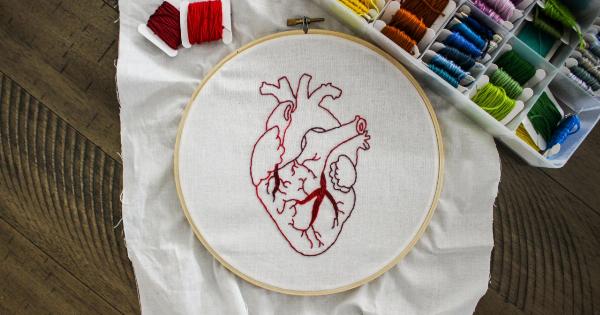The COVID-19 pandemic has affected millions of people worldwide and immense research is being carried out regarding its impact on different body systems. One such system is the cardiovascular system, specifically the coronary microvascular function.
In this article, we will discuss how COVID-19 can affect the coronary microvascular function and its consequences.
What is coronary microvascular dysfunction?
The coronary microvascular dysfunction (CMD) is a condition where the tiny blood vessels that supply blood to the heart muscle become damaged or dysfunctional.
This condition occurs independently of the larger coronary arteries and is diagnosed when there is evidence of ischemia (reduced blood flow) in the absence of obstructive coronary artery disease (CAD).
How does COVID-19 impact the coronary microvascular function?
COVID-19 is primarily a respiratory illness, but it also affects the cardiovascular system. The ACE2 (angiotensin-converting enzyme 2) is the receptor used by SARS-CoV-2 to enter and infect human cells.
ACE2 is expressed in various cells of the cardiovascular system, including the endothelium, cardiac myocytes, and vascular smooth muscle cells. Therefore, COVID-19 can directly impair the function of these cells.
Direct effects of COVID-19 on CMD
The COVID-19 virus can directly damage the endothelial cells, which line the blood vessels and play a crucial role in their function. The virus enters the cells and replicates, leading to their destruction.
This damage impairs the blood vessel’s ability to regulate blood flow and maintain their elasticity, leading to CMD.
Indirect effects of COVID-19 on CMD
The inflammatory response that occurs due to COVID-19 infection can also lead to CMD. The virus triggers an exaggerated immune response in some patients, leading to increased production of cytokines and chemokines.
This “cytokine storm” can lead to widespread endothelial dysfunction, including the microvasculature. The inflammation can directly cause oxidative stress, which can further impair the endothelial function. This inflammation can also trigger plaque rupture in patients with CAD, leading to thrombus formation and CMD.
Clinical consequences of COVID-19-induced CMD
Patients with COVID-19-induced CMD can present with angina-like symptoms. They are at risk of developing heart failure, myocardial infarction, and life-threatening arrhythmias.
Additionally, males and older adults are at a higher risk of developing CMD due to COVID-19. Patients with pre-existing cardiovascular risk factors are also at a higher risk of developing CMD.
Diagnosis of COVID-19-induced CMD
The diagnosis of CMD due to COVID-19 can be challenging as the usual diagnostic tests of CAD are not effective in identifying CMD.
Several diagnostic tests can help in diagnosing CMD, including invasive coronary reactivity testing, magnetic resonance imaging, stress myocardial perfusion imaging, and echocardiography. These tests can help identify the presence of CMD, assess its severity, and guide the treatment plan.
Treatment of COVID-19-induced CMD
The treatment of COVID-19-induced CMD aims to manage the underlying COVID-19 infection, relieve the symptoms, and improve the microvascular function.
The treatment includes oxygen therapy, anticoagulation therapy, and medications to control blood pressure, heart rate, and cholesterol levels.
Prevention and management of CMD in COVID-19 patients
Patients with pre-existing cardiovascular risk factors should take measures to reduce their risk of developing CMD.
This includes maintaining a healthy lifestyle, avoiding smoking, managing their blood pressure and cholesterol levels, following a healthy diet, and engaging in regular physical activity. Reducing stress and anxiety levels can also help manage the condition.
Conclusion
COVID-19 can directly and indirectly affect the coronary microvascular function, which can lead to symptoms like angina, heart failure, myocardial infarction, and arrhythmia.
The diagnosis of CMD can be challenging, and several diagnostic tests can help identify and assess the severity of the condition. The treatment aims to manage the underlying COVID-19 infection and improve the microvascular function through oxygen therapy, anticoagulation therapy, and medications.
Patients with pre-existing cardiovascular risk factors should take measures to reduce their risk of developing CMD.



























